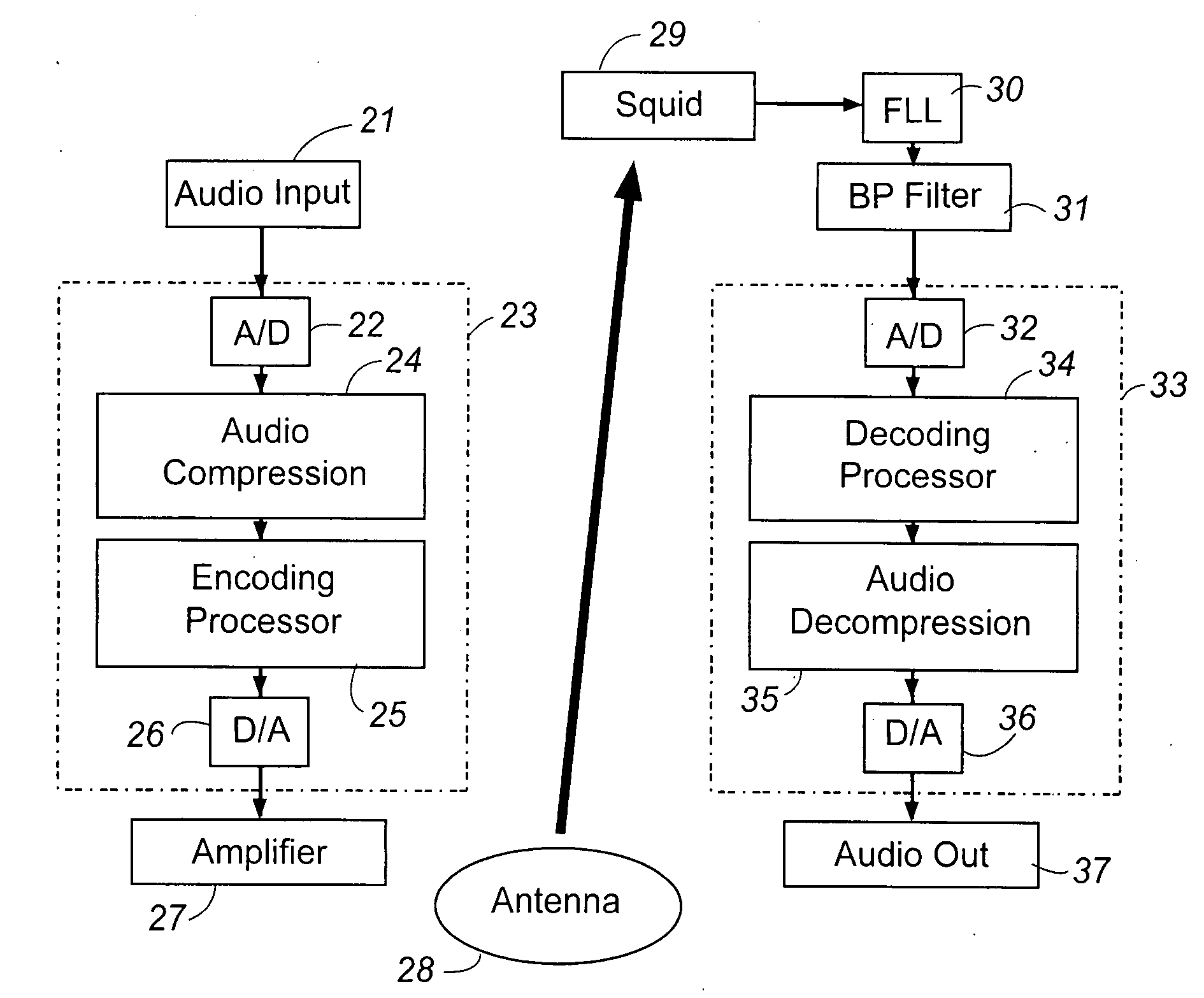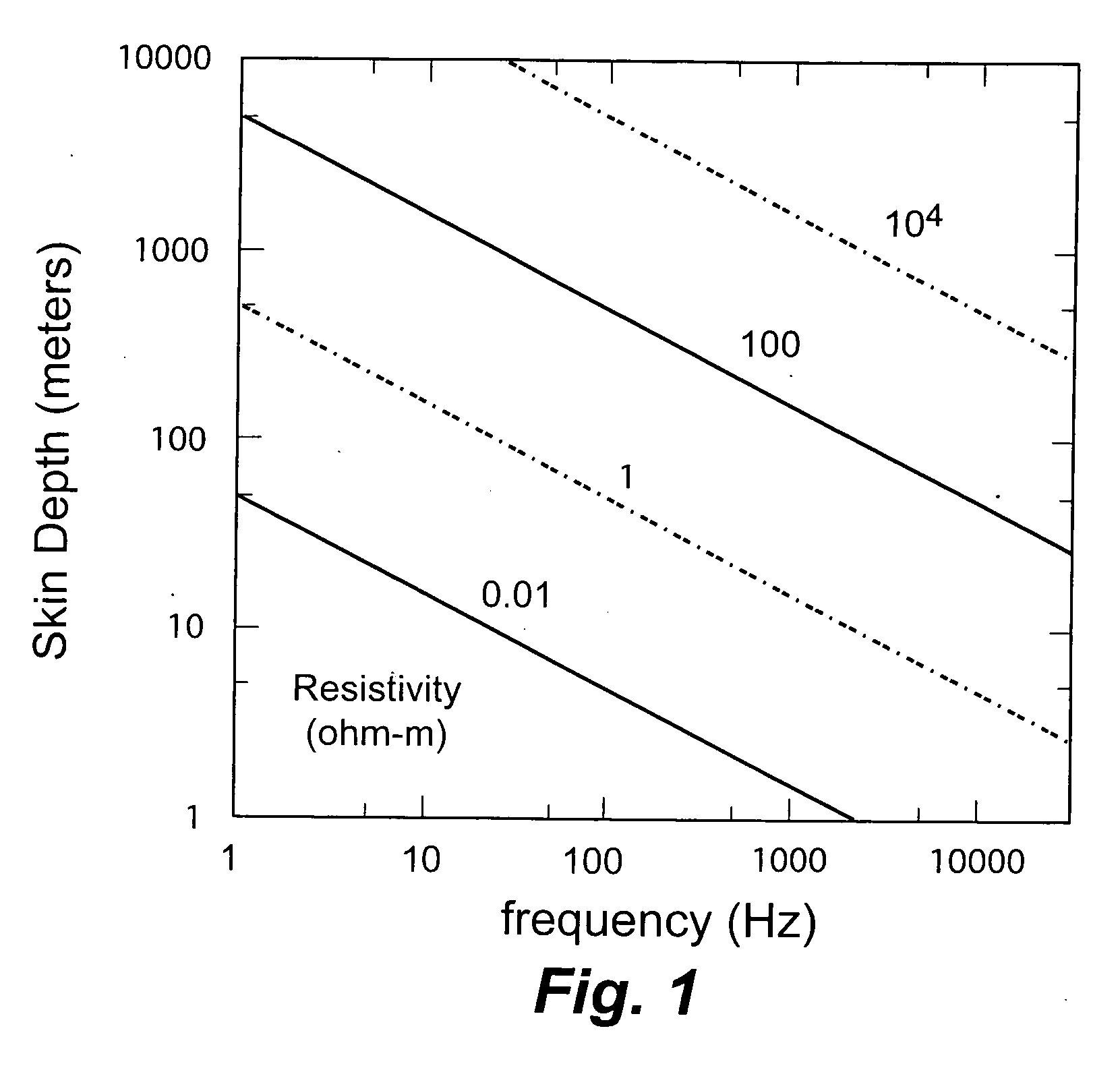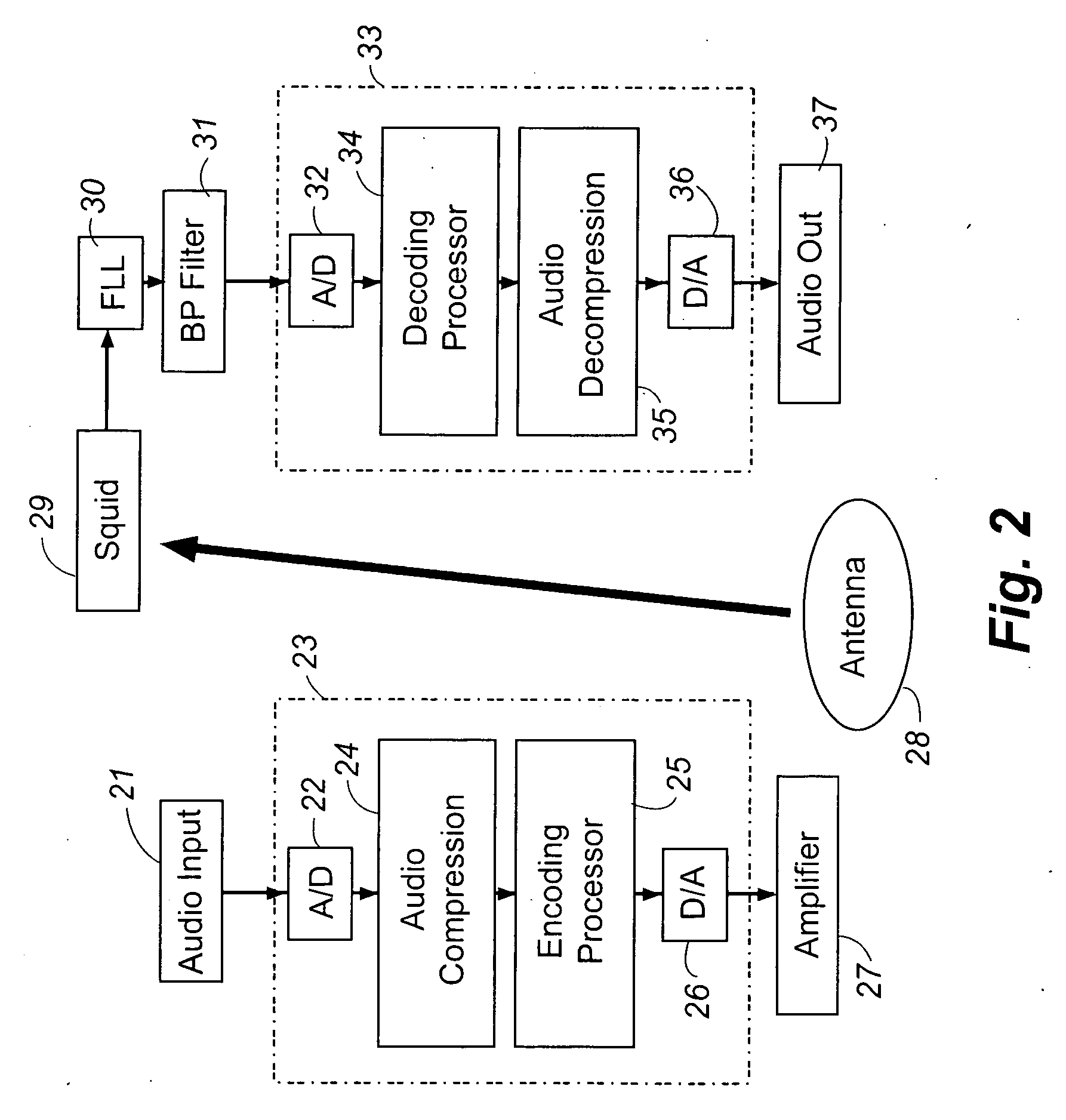Through-the-earth radio
a radio through the earth technology, applied in the field of radio communication, can solve the problems of difficult or impossible to reach fixed locations, difficult or impossible direct radio communication with underground positions, and difficult to effectively penetrate useful distances, and achieve the effect of effectively pinning useful distances through the earth
- Summary
- Abstract
- Description
- Claims
- Application Information
AI Technical Summary
Benefits of technology
Problems solved by technology
Method used
Image
Examples
Embodiment Construction
[0028] The present invention provides audio communication deep into underground locations. The invention can most easily be understood through reference to the drawings.
[0029] Referring first to FIG. 2, where a block diagram of the present invention is shown. Audio to be transmitted is input to audio input 21 and sent to analog to digital (A / D) converter 22 on board 23. Audio input 21 may be any desired audio input device, including a conventional microphone. Audio input 21 can be configured to accept input from remotely located walkie-talkies or other personal communication devices. Board 23 contains all the components for both transmitting and receiving. However, in FIG. 2, board 23 is configured to transmit. As shown A / D converter 22 provides its signal to audio compression 24, where it is compressed, and sent to encoding processor 25. Encoding processor 25 uses quadrature phase shift keying (QPSK), which is a technique that uses a constant amplitude signal with a 90° phase shif...
PUM
 Login to View More
Login to View More Abstract
Description
Claims
Application Information
 Login to View More
Login to View More - R&D
- Intellectual Property
- Life Sciences
- Materials
- Tech Scout
- Unparalleled Data Quality
- Higher Quality Content
- 60% Fewer Hallucinations
Browse by: Latest US Patents, China's latest patents, Technical Efficacy Thesaurus, Application Domain, Technology Topic, Popular Technical Reports.
© 2025 PatSnap. All rights reserved.Legal|Privacy policy|Modern Slavery Act Transparency Statement|Sitemap|About US| Contact US: help@patsnap.com



